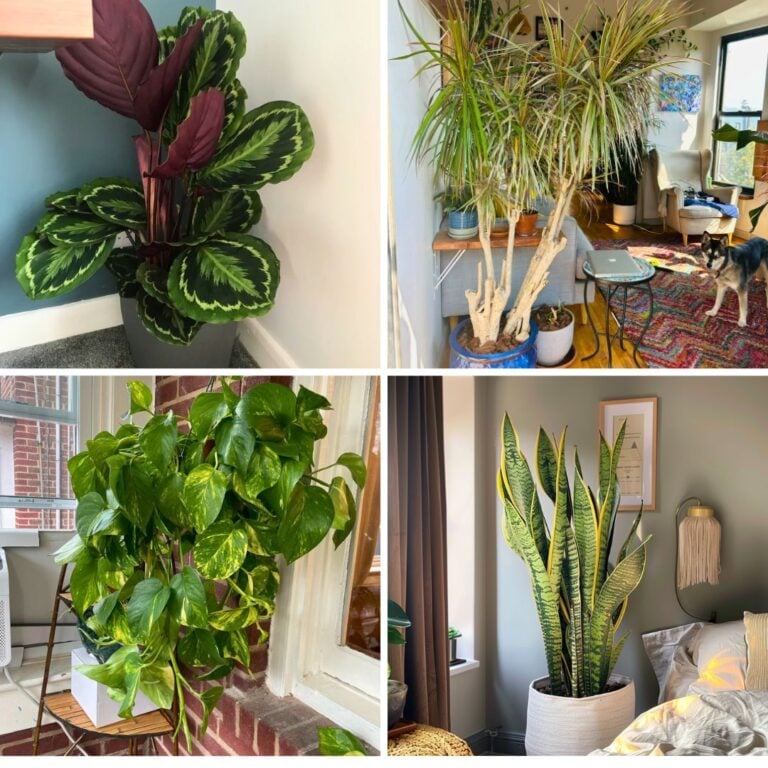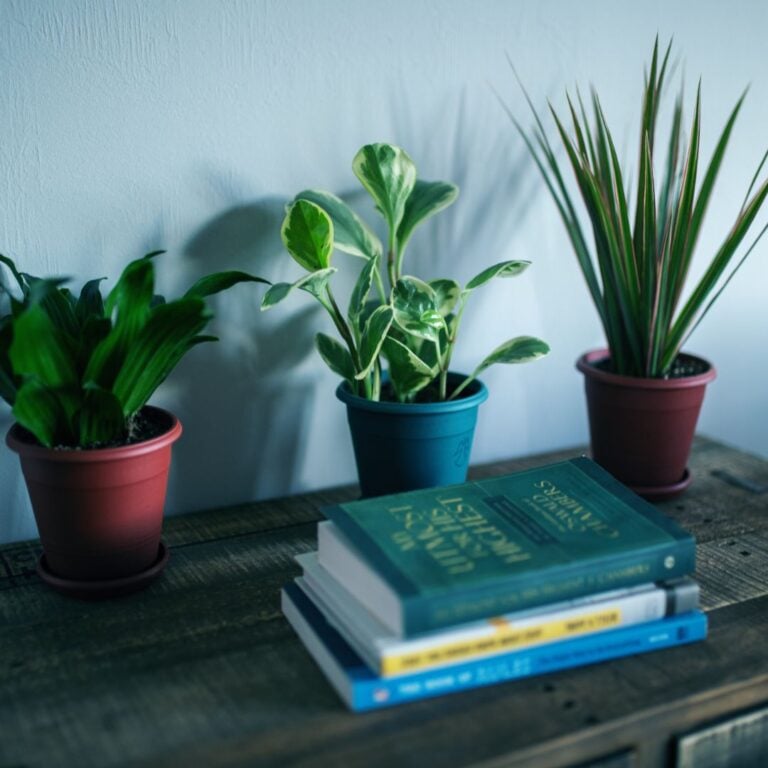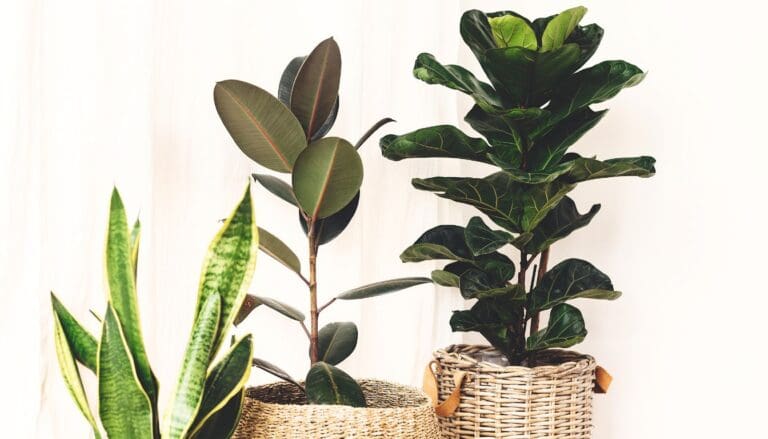Top 10 Drought-Tolerant Plants for Water-Saving Gardens
I really enjoy creating gardens that look great without a ton of watering. Dry weather? It doesn’t have to mean a boring landscape or sad, wilted plants.
You can absolutely have a low-maintenance garden that saves water and still looks lively and inviting.
Let me share some of my favorite drought-tolerant plants that honestly thrive with very little attention.
You’ll also pick up a few tips for keeping them happy, plus why it’s worth choosing plants that can handle dry spells.
Please note: Simplify Plants is reader-supported. As an Amazon Associate, I earn from qualifying purchases made by our readers with no extra cost added to you all! Some links in the post are affiliate links and I get a commission from purchases made through links in the post.
1) Lavender
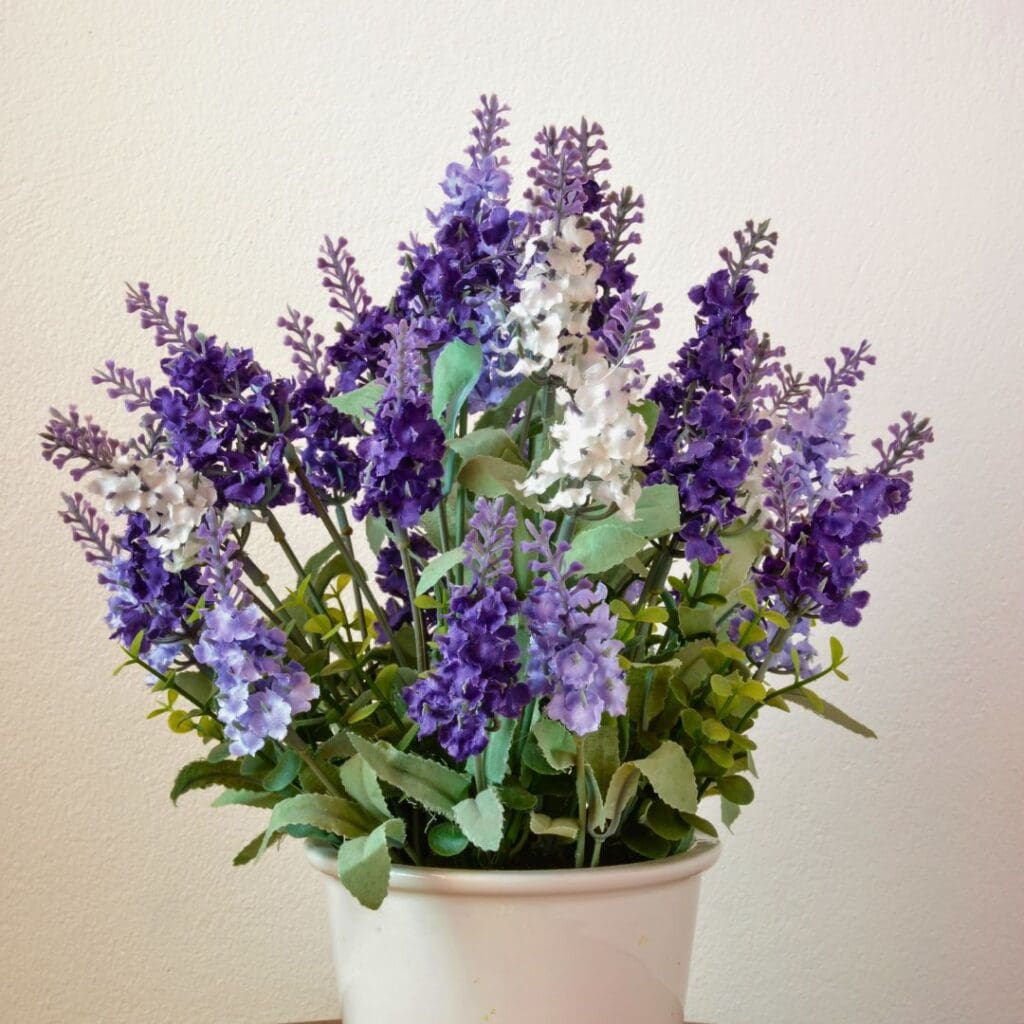
I’ve always loved growing lavender because it just keeps going, even when the weather gets dry.
This plant loves full sun and, once it’s settled in, barely needs any extra water.
It’s perfect for low-maintenance gardens that still want a pop of color.
The fragrant purple blooms pull in bees and butterflies, which honestly helps the rest of my plants, too.
I like snipping a few stems to dry—they’re great for crafts or just freshening up a room.
The scent is calming and seems to linger for ages.
Lavender does best in well-drained soil.
I’m careful not to overdo the watering, since soggy roots can really mess it up.
A little bit of neglect actually helps it toughen up.
I also like how you can shape lavender into neat borders or hedges if you’re into that sort of thing.
It keeps its color and form all summer, which is hard to beat.
Even after the flowers fade, those silvery-green leaves still look pretty nice.
When I plant lavender, I make sure there’s plenty of space for air to move around.
That helps keep mildew away and the plant healthier overall.
A quick pruning after it flowers keeps it looking tidy.
For me, lavender is just that perfect mix of beauty and practicality.
It saves water, helps pollinators, and smells amazing—all with barely any work.
2) Agave americana
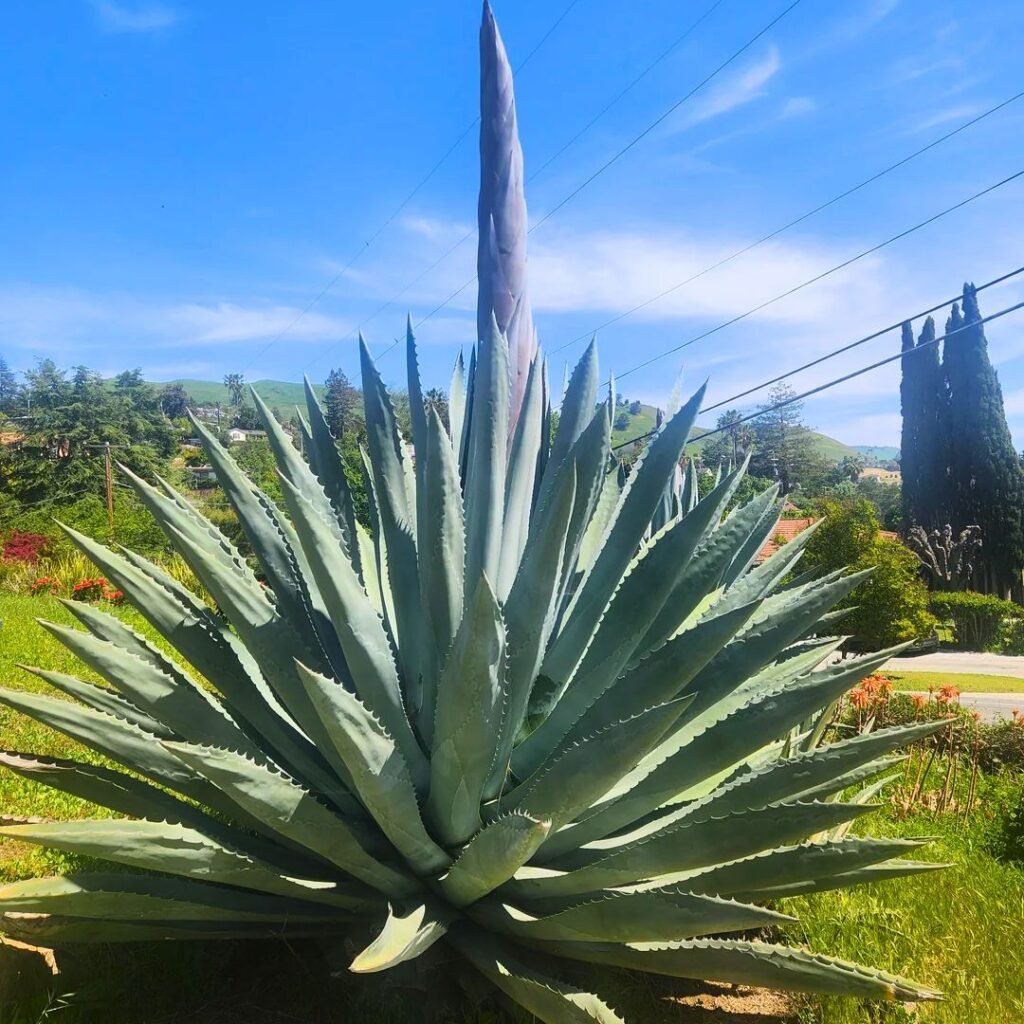
I’m a big fan of Agave americana, or century plant, because it adds real structure to the garden and basically takes care of itself.
Those thick, blue-green leaves make a bold rosette that stands out year-round.
The sharp leaf tips give it a striking look, but it stays pretty tidy.
I find it thrives in dry, sunny spots where most plants would just give up.
It’s happy in poor, sandy, or rocky soil and barely needs water once it’s settled.
Honestly, I only water mine if there’s a really long dry spell.
Agave americana grows slowly, which is great because it never gets out of hand.
It can get pretty big, so I make sure to give it room to spread out.
I love using it as a focal point in a gravel bed or near a walkway.
It just draws the eye.
This plant shrugs off heat and drought like it’s nothing.
I rarely see pests or diseases bother it, which is a relief.
Well-drained soil is a must, though—wet roots are a no-go.
When it finally blooms, the flower stalk is seriously impressive, though you only get one per plant.
After flowering, the main plant dies, but new pups pop up around the base.
I just replant those and keep the garden going without buying more.
Agave americana is all about beauty and resilience.
If you want a low-water garden that still looks modern and interesting, it’s a winner.
3) Sedum

Sedum is honestly one of the easiest plants I’ve ever grown, especially when water’s an issue.
These tough little succulents store water in their thick leaves, so they stay green even when it’s hot and dry.
I never worry about them drooping during summer. Sedum comes in tons of shapes and colors.
Some types spread low across the ground, others stand up with clusters of blooms.
Mixing different kinds adds texture and color, which I really enjoy.
The star-shaped flowers attract bees and butterflies, making the garden feel alive.
Sedum thrives in full sun and well-drained soil.
It doesn’t need fancy soil or much watering.
Once you plant it, you can almost forget about it.
I space the plants a few inches apart so they have room to spread.
They fill in bare patches quickly, making everything look neat.
If a piece snaps off, I just stick it in the dirt and it roots—so easy.
Sedum also handles poor conditions like a champ.
It grows in rocky spots, containers, even cracks in stone paths.
There aren’t many plants that look good almost anywhere, but sedum pulls it off.
Some types even change color in cooler months—reds, bronzes, subtle shifts that keep things interesting.
Because it needs so little care, I use sedum to save water and time.
It’s a smart pick if you want a garden that looks good with almost no effort.
Sedum proves you don’t have to choose between beauty and sustainability.
4) Russian Sage
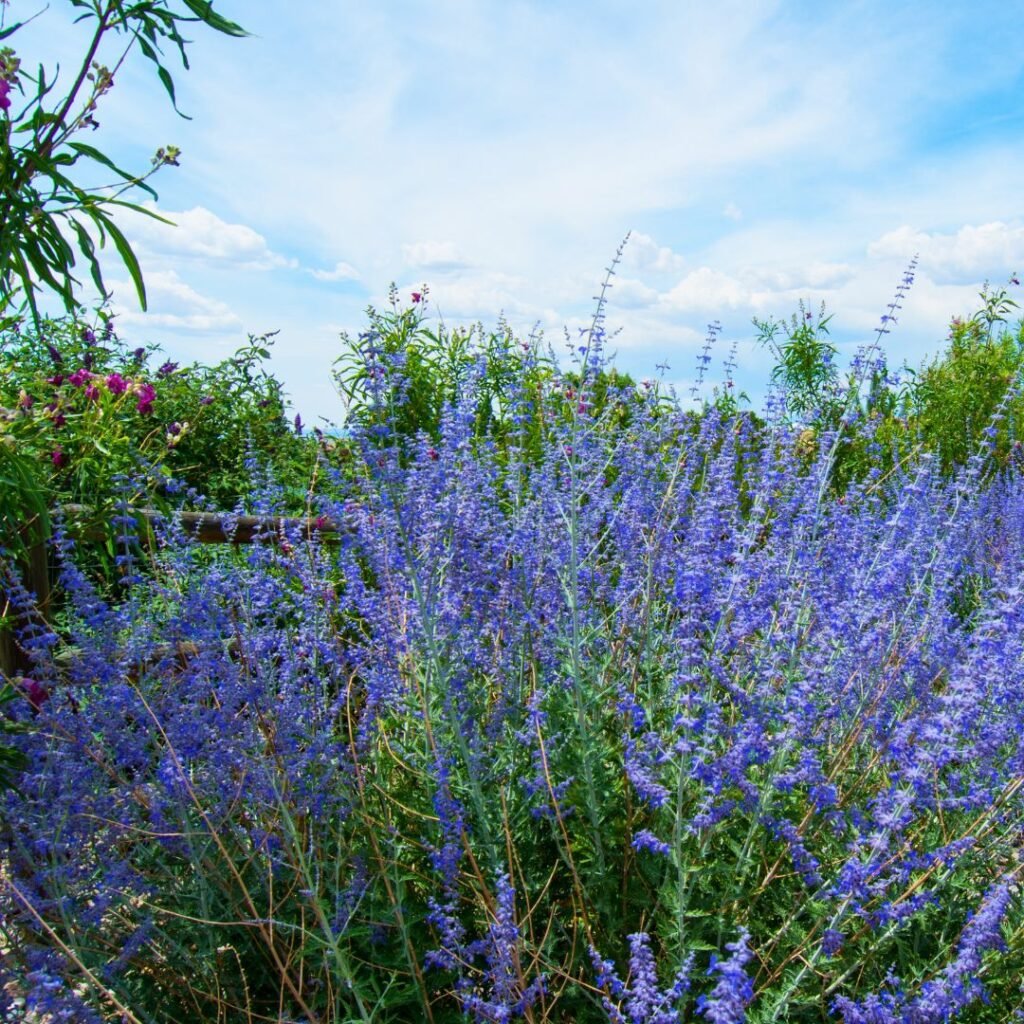
Russian Sage is a favorite for adding color and texture without much work.
Its tall, silvery stems and soft purple flowers look fantastic, even if the soil’s dry.
It loves full sun and doesn’t need much water once it’s going.
I plant it where the soil drains well, since too much moisture can be a problem.
I avoid heavy clay and give it a trim in early spring to keep it looking full.
This plant grows fast and fills empty spots nicely without being a bully.
The fragrant leaves give off a nice scent when you brush past.
Bees and butterflies seem to love it, which makes the garden feel lively.
It’s tough—doesn’t seem bothered by pests or diseases.
Russian Sage handles heat, drought, and poor soil better than most flowering plants I’ve tried.
5) Yarrow
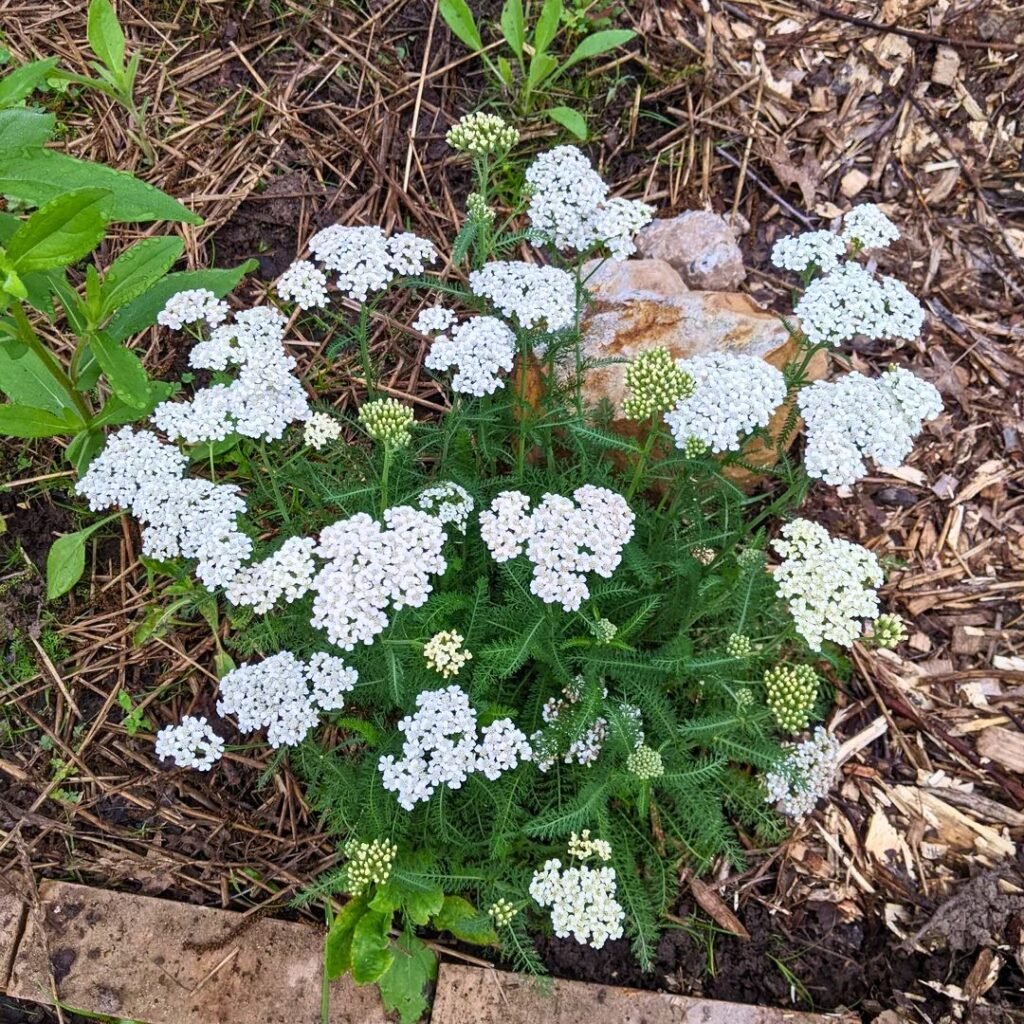
Yarrow is one of those plants that brings color and toughness at the same time.
It thrives in dry soil and full sun, so it’s a go-to when I’m trying to save water.
Once it’s settled in, it barely needs extra watering.
Yarrow grows in clumps with feathery green leaves and flat clusters of tiny flowers.
I see blooms in yellow, white, pink, or red, depending on the variety.
The flowers attract butterflies and bees, which is always a plus.
Yarrow is super easy to care for.
It does fine in poor soil and doesn’t need fertilizer.
I just trim off faded blooms to keep things tidy and get more flowers.
Because it spreads pretty quickly, I divide it every few years.
That keeps it in check and gives me more plants to share or move around.
I like using Yarrow in rock gardens, borders, or mixed beds.
It pairs well with lavender, sage, and other drought-tolerant plants.
The soft texture and bright flowers really perk up dry spots.
Yarrow stays green most of the year in mild climates.
Even when it’s not blooming, the foliage makes a nice backdrop.
It’s reliable, hardy, and adds a natural charm to any sunny spot.
6) Echinacea

Echinacea is a favorite of mine for adding color and life to the garden with almost no fuss.
Also called coneflower, it’s native to North America and just loves hot, dry conditions.
It does best in full sun and well-drained soil.
Once it’s established, it needs very little water—perfect for drought-prone areas.
I only water mine if there’s a long dry spell.
Echinacea blooms from summer to early fall, with bright pink or purple petals around a raised cone.
Bees, butterflies, and birds all seem to flock to it, making the garden feel alive.
It’s easy to grow from seed or small plants, and it spreads slowly, so it won’t crowd out neighbors.
Cutting back old blooms encourages more flowers and keeps things neat.
This perennial also handles poor soil just fine.
I don’t bother fertilizing often, and it comes back every year—even after cold winters.
If you want a low-maintenance garden that still pops with color, Echinacea is a solid pick.
7) California Poppy

California poppies are just about the easiest way to get bright color in the garden.
Those orange and yellow blooms really shine against dry soil and in full sun.
They’re native to the western US, so they’re built for hot, dry weather.
I’ve found they grow well in poor, sandy soil and don’t need much water at all once they’re settled.
I usually toss out seeds in early spring or fall.
They sprout fast and spread themselves, filling in empty spots with cheerful color.
The plants reseed easily, so I often get new blooms the next year without lifting a finger.
To keep them neat, I trim off old flowers after they fade, which helps them bloom longer.
Even when they’re done flowering, the soft green leaves look nice.
Bees and butterflies seem to love them, so they’re great for pollinators too.
Since they like full sun and dry conditions, I skip shady or wet spots.
Too much water can rot the roots, so I just let them do their thing.
When I want a garden that’s bright but doesn’t need much attention, I always include California poppies.
They’re tough, simple, and perfect for water-saving landscapes.
8) Bougainvillea

Bougainvillea instantly brings color to any garden with hardly any effort.
Those bright pink, purple, or orange bracts just light up a space.
It loves full sun and keeps blooming even if the soil stays dry for a while.
I’ve noticed it actually flowers more if I water it less—too much water, and the blooms drop off.
That makes it a fantastic pick for low-maintenance, water-saving gardens.
Bougainvillea grows well in pots, hanging baskets, or along fences.
I like training it to climb a wall or trellis for a big, colorful display.
If you prefer things tidy, you can trim it into a bush or hedge.
It needs well-draining soil and plenty of sunlight.
I avoid heavy clay or soggy spots—this plant wants to stay dry.
Once it’s established, it handles heat and drought better than most flowering plants I’ve tried.
I also like that it attracts butterflies and hummingbirds, bringing even more life to the garden.
It does have thorns, but honestly, with a little pruning and gloves, it’s easy to manage.
A trim after each bloom cycle keeps it neat and encourages new growth.
If you live somewhere cold, you can grow Bougainvillea in a container and bring it inside for winter.
It doesn’t love frost, but it bounces back fast when things warm up.
For me, Bougainvillea is perfect when I want color, drought tolerance, and low upkeep all in one.
It’s tough, adaptable, and adds a bold splash of brightness wherever it grows.
9) Rosemary

Honestly, I love growing rosemary—it just makes gardening feel easy, especially in dry weather. This herb thrives in full sun and well-drained soil, so it fits right into low-water gardens.
Once it’s settled in, I barely have to water it. The woody stems and needle-like leaves give my garden a tidy, textured vibe that I really enjoy.
I often plant rosemary as a border or pop it in containers near the patio. The soft blue flowers are a favorite with bees and butterflies, and they add a gentle splash of color.
It’s also super versatile. I snip off a few sprigs for cooking or drying, and the plant just keeps going.
To keep rosemary happy, I make sure it gets good air circulation and give it a light trim after flowering. This keeps it neat and encourages fresh growth.
Even in hot, dry summers, rosemary stays green and fragrant with almost no fuss. If you’re after a plant that looks good, smells amazing, and doesn’t guzzle water, rosemary is a smart choice.
It really does bring a bit of Mediterranean charm to any drought-tolerant garden.
10) Oleander

There’s something about Oleander that just brings bold color and shape to a dry garden. It loves hot, sunny spots and barely needs any water once it’s established.
The thick, green leaves stay lush, even during those long, dry spells. Oleander puts out gorgeous clusters of flowers in pink, white, red, or yellow—sometimes I can’t decide which color I like best.
The blooms stick around all summer and really make a statement, no extra effort required. I like using it along borders, fences, or in big containers.
Oleander is tough as nails. It handles heat, wind, and less-than-great soil better than most shrubs I’ve tried. I only water mine every so often during extra dry stretches, and it still looks great.
Just a heads-up: all parts of Oleander are toxic if eaten, so I keep it away from pets and little kids. Gloves are a must when pruning.
With some regular trimming, I can shape Oleander into a tidy hedge or let it grow tall for privacy. It bounces back quickly after a good cut.
I appreciate how low-maintenance it is—pests and diseases don’t seem to bother it much, and it stays green year-round where winters are mild.
If you want a colorful, drought-tolerant shrub that asks for very little, Oleander is a reliable pick. It really livens up dry spaces without much work or water.
Benefits of Drought-Tolerant Gardens
Drought-tolerant gardens are honestly a win for me—they save water, cut down on chores, and still help out local wildlife. I get to use fewer resources and enjoy a yard that looks good even during dry spells.
Water Conservation and Eco-Friendliness
When I stick with drought-tolerant plants, I end up using way less water than a regular garden would need. These plants are built for dry conditions and don’t mind if I skip a watering here and there.
It’s a relief to cut down on water bills and feel like I’m doing my part for the planet. I also notice there’s less water waste since I’m not running sprinklers all the time.
Choosing drought-tolerant plants really helps conserve local water supplies and makes my garden more sustainable.
Reduced Maintenance and Upkeep
I’m a fan of how easy to care for these gardens are. Once the plants settle in, I spend less time watering, feeding, or trimming.
A lot of drought-tolerant plants grow slowly and don’t get bothered by pests, so I use fewer chemicals. That means less work and lower costs for me.
The soil stays healthier, too, since I’m not digging around all the time. A few simple chores keep things tidy:
- Occasional deep watering
- Light pruning once or twice a year
- Mulching to lock in moisture
It’s nice not having to fuss over the garden every day.
Supporting Local Wildlife
Drought-tolerant gardens can attract birds, bees, and butterflies—something I really enjoy watching. Native flowers are great for pollinators and small critters, offering nectar and seeds.
By skipping heavy watering and harsh chemicals, I’m creating a safe place for wildlife. Plants like lavender, sage, and yarrow bring both beauty and real ecological value.
It’s a good feeling to help balance the local ecosystem while enjoying a peaceful, natural spot in my own yard.
Tips for Growing Drought-Tolerant Plants
I focus on healthy soil, efficient watering, and smart plant pairings to keep my garden looking good with less water. These steps make a real difference and cut down on daily chores.
Soil Preparation and Mulching
I always start by working on the soil before planting anything. Loose, well-draining soil lets roots dig deep for moisture.
Mixing in compost or aged manure adds nutrients and helps with texture. After planting, I add a layer of 2–3 inches of mulch.
Mulch keeps the ground cool, locks in water, and stops weeds from taking over. I switch between wood chips, straw, or gravel depending on the look I’m after.
Every few weeks, I check if the soil feels compacted. If it does, I gently loosen it around the plants—healthy soil keeps drought-tolerant plants strong, even when it’s dry.
Smart Watering Techniques
I water deeply but not too often. That way, roots grow down where it stays moist longer.
A slow, deep soak once a week is usually better than a quick daily splash. I really like using drip irrigation or soaker hoses—they get water right to the roots and don’t waste much.
Watering early in the morning helps, too, since less water evaporates. I group plants with similar water needs together so I don’t accidentally overwater or underwater anyone.
With these habits, I use less water but keep my garden happy.
Choosing the Right Plant Combinations
I try to match plants that like the same conditions. For example, lavender, rosemary, and sage all love sun and dry soil, so they work well together.
Mixing different heights and textures makes things more interesting. Taller plants can shade the shorter ones, which helps the soil stay cool.
Here’s a quick cheat sheet I use:
| Sun-Loving | Partial Shade | Ground Cover |
|---|---|---|
| Lavender | Coral Bells | Sedum |
| Yarrow | Hosta | Creeping Thyme |
Picking the right combos helps me build a balanced, low-water garden that still looks lively.
Frequently Asked Questions
People often ask me about the best drought-tolerant plants for easy, low-water gardens. In my experience, tough species, a little planning, and some smart care can make any garden both pretty and practical.
What are some popular drought-resistant plants for low-maintenance gardens?
I’m a fan of Lavender, Agave americana, and Sedum—they barely need watering once they’re settled in.
These plants handle heat and still look good, even when it hasn’t rained in a while.
Can you suggest perennial plants that thrive in dry conditions?
Russian Sage and Yarrow are great perennials for dry spots. They come back every year and keep their color, even when the weather is rough.
What are the best drought-tolerant plants for creating a water-wise landscape?
Mixing succulents like Agave with flowering herbs such as Lavender works well for me.
It saves water, adds texture, and fills out the garden nicely.
Which drought-resistant plants are also good for attracting pollinators?
Lavender and Yarrow are top picks for bees and butterflies. Their flowers last a long time and provide plenty of food for pollinators.
How do I care for drought-tolerant plants in my garden?
I water deeply but let the soil dry out between waterings. Adding mulch helps keep moisture in and cuts down on weeds.
What ground cover plants can survive in extremely dry soil?
I’ve actually had some luck with Sedum as a ground cover. It tends to spread out nicely, hugging the ground and not asking for much.
Sedum really doesn’t mind poor, dry soil. If you want something that won’t fuss over tough conditions, it’s honestly a solid pick.
Recommended Garden Supplies
| Product Image | Our Recommended Gardening Supplies | Check Offers! |
|---|---|---|
Top Top
Top
Top
Top
Top
Top
Top
Top | rePotme Houseplant and Tropical Classic Potting Soil Mix | Check Offer On Amazon |
 Top
Top
Top
Top
Top
Top
Top
Top | Espoma Organic Indoor Plant Food | Check Offer On Amazon |
 Top
Top
Top
Top
Top
Top
Top
Top | GooingTop LED Grow Light 6000K Full Spectrum Clip Plant Growing Lamp | Check Offer On Amazon |
 Top
Top
Top
Top
Top
Top
Top
Top | Soil Moisture Meter | Check Offer On Amazon |
 Top
Top
Top
Top
Top
Top
Top
Top | Govee Hygrometer Thermometer, Bluetooth Enabled! | Check Offer On Amazon |
 Top
Top | LEVOIT Humidifiers for Large Room(Best For Plants) | Check Offer On Amazon |
 Top
Top
Top
Top
Top
Top
Top
Top | Upgraded DIY Automatic Drip Irrigation Kit, 15 Potted Houseplants Support | Check Offer On Amazon |
 Top
Top
Top
Top
Top
Top
Top
Top | Stainless Steel Heavy Duty Gardening Tool Set | Check Offer On Amazon |
 Top
Top
Top
Top
Top
Top
Top
Top | Bonide Insecticidal Soap | Check Offer On Amazon |
 Top
Top
Top
Top
Top
Top
Top
Top | Bonide 32 oz Spray Neem Oil for Organic Gardening | Check Offer On Amazon |
 Top
Top
Top
Top
Top
Top
Top
Top | Garden Safe Fungicide | Check Offer On Amazon |
Note: Some images in the articles are sourced from Reddit and Other Platforms For Reference Purpose.


